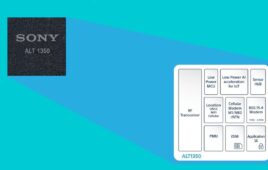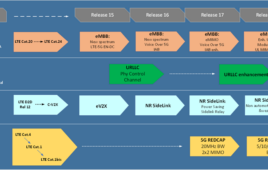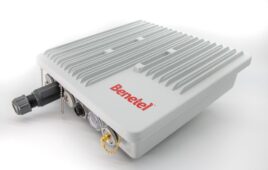Kyocera is at it again, differentiating from the rest of the mid-range Android pack with subtle flares of technology that appeal to a broad customer base. The company announced two new Android phones, as well as demonstrating something called “Tissue-Conduction Audio Technology,” which the company says will improve the quality of voice calls by eliminating ambient noise.
The Hydro, a water-resistant Android smartphone, is perhaps the headliner for Kyocera at this year’s show. John Chier, spokesman for Kyocera, explains that the Hydro is certified protected against water damage for up to 30 minutes in up to a meter of water. Chier says a survey the company conducted showed that 70 percent of respondents said that waterproofing their mobile was important to them.
“It’s something that’s really an adversary of mobile phones,” Chier said, citing research from TNS Global, which says it has tracked 82.5 million phones destroyed by water alone.
The Hydro, which Chier calls a mid-tier Android phone, comes running Ice Cream Sandwich and features a 3.5-inch HVGA 480 x 320 display, 1GHz Snapdragon processor, 3.2-megapixel camera, Wi-Fi and Bluetooth.
Kyocera isn’t new to the business of keeping devices safe against water. “We began developing devices as early as 2008, initially in Japan, with this water-resistance technology,” Chier said, noting that to date the company has a total of 16 water-resistant phones on the market.
Chier explains that the Hydro is part of Kyocera’s strategy to attract consumers looking for the ruggedized devices. The company already holds three of the four SKUs in Sprint’s Direct Connect portfolio. “This ruggedized area is really something we’ve been working hard on,” Chier says. You’ll recall that Kyocera also partnered with Sprint on the quirky dual-screen Kyocera Echo.
The Hydro is set to launch sometime in late summer. Chier says there’s no carrier or pricing information available just yet.
In the interest of further addressing that mass-market audience, Kyocera recognizes that a lot of users upgrading from a simple texting phone will still want a full qwerty keyboard on their new Android device. Enter the Kyocera Rise.
Cheir refers to a recent Yankee Group study that showed 69 percent of respondents said qwerty keyboards were a “nice to have” or a “must-have” feature on their phones.
The Rise’s specs fall pretty much in line with the Hydro, although it is not water resistant and features a slide-out qwerty keyboard.
Last but not least, Kyocera is introducing a new technology that it hopes will help those who still make voice calls hear the person on the other end of the line a little better. Tissue-Conduction Audio Technology is designed to deliver sound vibrations directly to the eardrum. Chier says it’s a technology that was originally used in hearing aids but which Kyocera hopes will translate well to mobile phones.
The technology uses a specially designed Kyocera ceramic transducer to transmit sound through air as sound waves and tissue as vibrations. Chier says it shouldn’t be too much of a mystery that Kyocera is well versed in this area. The company’s name, Kyocera, is derived from two words, Kyoto and Ceramics.
“It’s a really great technology for helping overcome ambient noise for people who have difficulty hearing their cell phones,” he says.




